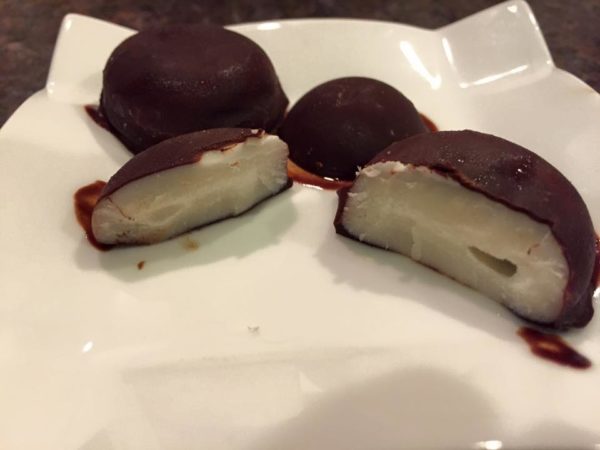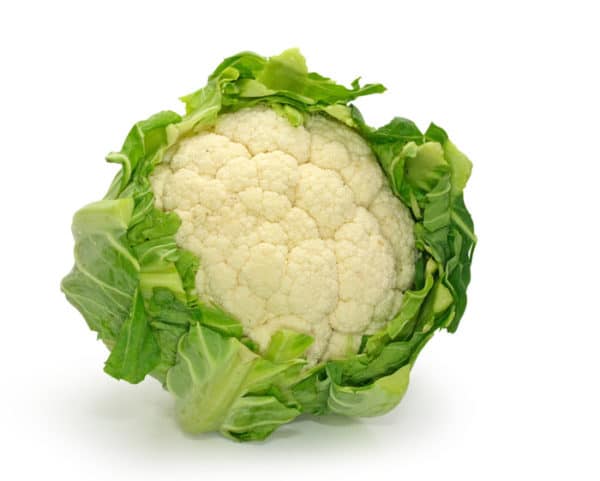

We all know that the typically high-carb, school-provided lunches are just not good options for our kids. Although I homeschooled my two sons for a good part of their education, when they did go to school, I always packed their lunches myself. In the first paragraph, I do say “dreaded” as I know that many people struggle with getting their kids to eat healthy foods. I also realize that kids do a lot of “trading” with their meals, so you just never know. But you still have to keep trying.
Too often we’re tempted to throw a peanut butter and jelly sandwich in their lunch bag, along with those individual containers of applesauce, a kid-sized bag of pretzels, and a juice box and call it good. But eating that type of meal all through the school year will expose your child to ingredients that are not in their best interest – physically and mentally.
For example, did you know that the ingredient which gives the applesauce in that container its bright orange and yellow color wasn’t apples at all, but rather yellow 6, an artificial color that’s linked to a host of potential side effects?
In this blog article, I thought I’d talk a bit about some food options for your child’s school lunches that are healthy, but that I also think they will eat.
In particular, I’m going to focus on lunch options that support your child’s brain health.
First, you need to pack lunches that keep your child’s gut healthy
What? You thought I said I was talking about “brain foods” not “gut foods”! But wait – let me tell you how they are both the same!
With all of the emerging research on how critical the gut microbiome is to brain health – and vice-versa – it is even more important than ever that you pack foods for your child’s lunches that will make a positive contribution to your child’s microbiome.

A healthy gut may actually help your child better deal with stress as well. The gut chemically supports the brain’s memory center, the hippocampus. So your child’s memory function may even be better. Scientists now believe that an unhealthy gut microbiome may make a child more prone to hyperactivity.
An unhealthy gut can also allow more toxins to be absorbed into your child’s body. Brain fog and anxiety, along with a lot of inflammation, can result. I know you don’t want this for your child.
Foods that support a strong microbiome
So what can you feed a child that supports their microbiome? Here are some ideas.
Most important? Reduce the carbs
The most important thing to maintaining your child’s healthy microbiome is to reduce carbohydrates. Only allow carbs from vegetables and low sugar fruits. Remember to think of carbs as a toxin for the brain – because that’s what they are! I know this is a tough one for kids if you didn’t start early with them on this in their diet. But there are swap-out options for breads that you can try that they will probably like. Swap in large romaine lettuce leaves as bread substitutes for a sandwich, for example. Or make a lettuce taco using the leaves as the shell for that crunch. You can add a crumbled veggie burger or ground nuts, sprouted lentils, and more.
If your child is missing out on pizza day at school, you can make them a wonderful pizza crust out of jicama slices. If you haven’t discovered jicama yet, it is a juicy, sweet tuber with a crispy crunch. You can use it to make a wonderful crust. I’ve shared this idea many times in my VITAL Healing Kitchen show. Add a home-made marinara sauce, or just buy organic tomato sauce, along with some dairy-free cheese, such as those I teach in some of my classes. Then add onions, olives, peppers, or whatever your child’s favorite vegetable toppings might be.

Do some research online or consider watching a class I did with kids in the kitchen. Along with learning to make pizza, you’ll also find pasta substitutes, and even shakes, dips, and desserts. You can also use Paleo Wraps or Pure Wraps which are made with coconut meat. Use for burritos, sandwiches, and more.
I usually added sliced carrots and celery to my sons’ lunches, and maybe some hummus or guacamole to dip the celery into. Kids love to dip apple slices in almond butter. You can also cut up jicama, which tastes a bit like an apple, for a treat as well.
There have been studies that show that the microbiomes of people whose diets are primarily plant-based are very different than those that are primarily animal-based. Plants are full of fiber, which feeds good bacteria cells; plants are better at reducing inflammation in your colon; and plants are full of vitamins, such as vitamins C and A, which boost your immunity that is largely found in your gut. Animal products, on the other hand, tend to feed the bad bacteria due to its fat content.
It is up to you what you feel you should feed your family. I chose a vegan diet for my two sons and husband, but I didn’t do it dogmatically. Had I ever seen a need for additional foods to address a nutritional deficiency, I would have changed my stance in a minute. But my sons both thrived. I did originally plan to raise them on all raw as well, but they needed – and wanted – more, so I did include cooked vegetables for them, legumes, and whole, non-gluten grains.
Focus on adding fermented foods/natural probiotics (even if you have to go stealth!)
The best thing you can do for your child to support their gut and brain health is give them natural probiotics. Learn a lot more about the benefits and food sources for probiotics here.
Fermented foods are an excellent natural source of probiotics. There are a lot of good fermented foods that you can serve. Sauerkraut is one fermented food that many kids love as they like the tanginess. You can make this yourself at home. If you find that you need specific probiotics, you can add those in as you make your fermented foods.

If you can’t get your child to eat natural probiotics through fermented foods, look at having them take a probiotic supplement. It is that important.
Add prebiotics
Prebiotic foods are those foods that your child eats that their healthy gut bacteria like to eat as well! Both your child and their beneficial gut bacteria will thrive on any number of prebiotic foods. Along with their gut loving these foods, your child’s brain will, also! Some examples include green bananas, cold cooked potatoes, as well as beets, cabbage, lentils, beans, onions, and garlic. Those bananas could work especially well in their lunch.
Consider dehydrated foods if your child just needs that crunch!
If you have a carb craving child, or one that just might feel the need to have the sensation of chewing crunchy bread, crackers, chips, and other carb-rich treats, consider investing in a dehydrator and making your own delicious carb substitutes for you and your family. Your brain will thank you. A dehydrator is basically low temperature baking. In my Dried and Gone to Heaven DVD Home Study course, you learn all about choosing a dehydrator, along with creating foods that everyone around you will enjoy. This includes bagels and a variety of breads, an assortment of crunchy crackers, and even tootsie rolls and fruit roll ups.
You can also learn to make your own “carb” treats from whole, fresh vegetables, fruits, and sprouted nuts and seeds. Just one example the kids may like is making burrito wraps at home. If you have a dehydrator, you can easily create burrito wraps, pizza crust, and more by blending young coconut meat with just enough water to make a thick batter, and then dehydrate for approximately 8 hours; flip, and dehydrate again until done. Yummy!
Always plan on healthy leftovers!
One way that I survived working full-time along with being a mom of two young sons was embracing the concept of leftovers! I call them planned-overs. I always made portions that would last at least 2 meals for the family with some additional leftovers to put in school lunches. If you get into this habit it will allow more options for your child’s lunch.
Pile on the healthy Omega-3s and antioxidants!
Foods rich in omega-3 fatty acids are essential for brain growth and function. Research has shown that people who get more fatty acids in their diet have sharper minds! Ensure you find a way to add omega-3-rich foods to your child’s lunch, including sea veggies, flax seeds, chia seeds, walnuts, and more. Focus on incorporating some of the top green omega 3 foods, such as kale, spinach, watercress, and Brussel sprouts into your child’s lunchboxes as well.
Carrots, spinach, sweet potatoes, and pumpkin are all great sources of antioxidants that will help keep your child’s brain cells healthy and strong.
Most of the berry family also comes packed with high levels of antioxidants and other vitamins. Typically, the more intensely colored berries are the more nutritious. Don’t just serve them alone. Throw them into a green salad or serve with a vegetable dish to mix it up!
Don’t forget to use non-toxic utensils and materials in your child’s lunch
I don’t use plastic containers due to their containing toxins as well as sustainability concerns. You can find many options for reusable containers that don’t have these issues. There are some great steel lunch boxes, plates, and even water bottles and thermoses. Bento boxes are also a great alternative.
Other tips for healthy lunches
I have always found that if you let kids help with making their lunch, or at least let them have a say, that 
If you know that your child is just not going to eat their healthy lunch no matter what you do, you can at least make sure they eat a healthy breakfast and dinner! You have more control over these meals. If you don’t have junk food in the house, they can’t eat it. It is as simple as that. Parents, you need to be good role models!
Finally, empower kids to know the effects of unhealthy food choices. They might surprise you!
If you want to learn more about how to create a healthy gut microbiome and digestive system for your children, you may want to investigate our GRAND gut repair system. By starting with the foundations of health in your digestion, you will be help your child to go to the top with a healthy brain.
COMMENTS? What types of brain-healthy foods do you pack in your kid’s lunch? Please share! I’m sure they have their favorites!
Share this:

Are you feeling stuck?
Do you feel as if something is missing from your practice that's keeping you from delivering breakthrough outcomes for your clients?.
Recent Posts
Our Programs
Nutritional Endocrinology Practitioner Training (NEPT)
The Mastery and Certification tier is our flagship program and provides everything you need to feel confident as a practitioner who knows how to get results that lead to healthy and happy clients.
Functional Assessment Mastery
Explore the relationships between the most important hormones and their relationship with nutrition.
Functional Nutrition Mastery
Learn how to support your clients to eat and supplement in a way that reduces and eliminates chronic symptoms.
Medical Disclaimer: The information on this website is not intended to replace a one-on-one relationship with a qualified health care professional and is not intended as medical advice. It is intended as a sharing of knowledge and information from the research and experience of Dr. Ritamarie Loscalzo, drritamarie.com, and the experts who have contributed. We encourage you to make your own health care decisions based upon your research and in partnership with a qualified health care professional.
Disclosure: Sometimes (but not always), when I share resources in my programs, newsletter, and on my website, I'm using an affiliate link, which means I do make money if you buy. My credibility is extremely important to me; therefore, I only endorse the products, services, and people I believe in. DrRitamarie.com is independently owned and the opinions expressed here are my own.
Click here to see our Privacy Policy.










